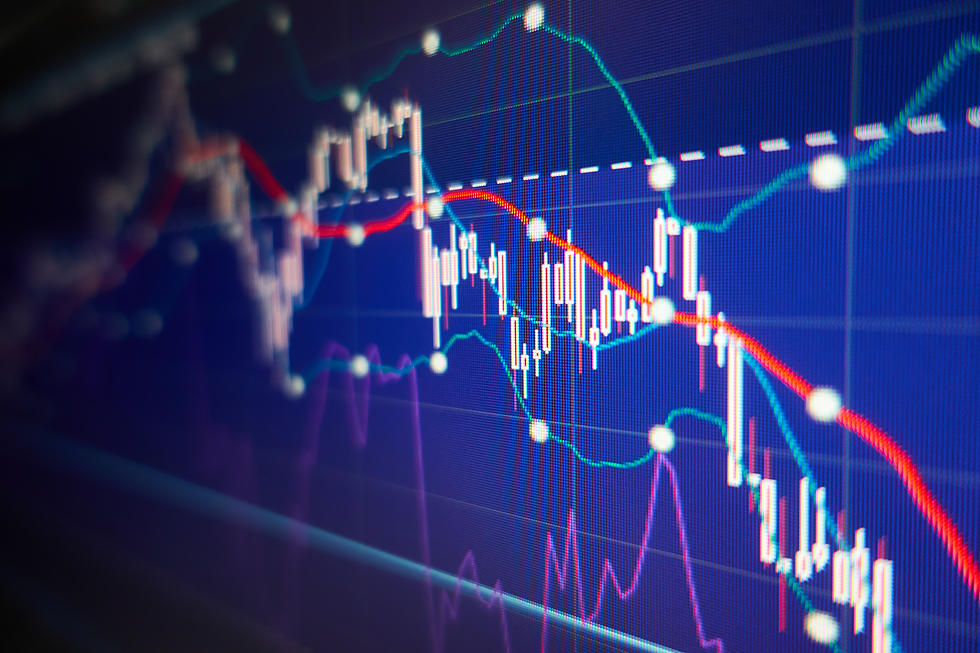
Stocks on Track to Close Out May With Gains
Stocks are on track to close out the month with a strong gain, confounding the Wall Street adage of "Sell in May and go away."The Dow Jones industrial average is on track to advance for a sixth straight month. The Standard & Poor's 500 index is set to gain for a seventh straight month, its longest winning streak since 2009.
On Friday, there was both encouraging and disappointing news on the economy.
Stock indexes started the day lower after the government reported that Americans cut back on spending. They were moving between small gains and losses in afternoon trading Friday.
Consumer spending fell 0.2 percent in April, the first decline since last May, the Commerce Department said early Friday. That news was offset by a report released later showing that a measure of U.S. consumer confidence jumped to the highest level in almost six years in May, lifted by rising home prices and record-high stock prices.
The University of Michigan's consumer sentiment index rose to 84.5 in May, up from 76.4 in April and the highest since July 2007. Investors are hoping that increasingly confident consumers will step up their spending, which would contribute to U.S. economic growth.
The Dow Jones industrial average was down six points, or 0.04 percent, to 15,318 as of 2:09 p.m. Eastern Daylight Time.
The Standard & Poor's 500 index was down three at 1,651, or 0.2 percent. The Nasdaq composite lost less than a point to 3,491.
In government bond trading, the yield on the 10-year Treasury note rose to 2.19 percent from 2.12 percent late Thursday. The yield has risen by half a percentage point since the start of the month and is the highest it's been since April 2012.
Rates have risen on concern that the Federal Reserve is considering easing back on its purchases of $85 billion in bonds every month.
The sharp rise in Treasury yields could be trouble for the market if it continues unabated, said David Bianco, chief U.S. equity strategist at Deutsche Bank. The yields on Treasury notes are benchmarks for setting interest rates on many kinds of loans to consumers and businesses. If they rise quickly, lending rates would rise too, holding back the economy by discouraging borrowing and spending.
"I'm not bearish, but I'm a little bit cautious," Bianco said.
The Dow is up 3.3 percent this month and is on track to record its first gain in May since 2009. The S&P 500 index has risen by 3.5 percent.
The S&P 500 has only fallen in one month, October, over the last year.
The "Sell in May" tactic is part of the Stock Trader's Almanac's "Best Six Months" strategy, which recommends investing in the Dow between Nov. 1 and April 30 each year and then switching into fixed income for the remainder of the year.
The Dow rose an average of 7.5 percent between November and April between 1950 and 2011, according to this year's Almanac. The average gain over the six-month period from May 1 to Oct. 31 was only 0.3 percent.
In commodities trading, oil fell 77 cents, or 0.8 percent, to $92.84 a barrel, close to its lowest in a month, after OPEC oil ministers said they would keep their output targets steady. Gold fell $17.30 to $1,395 an ounce, a decline of 1.2 percent.
Among stocks making big moves:
-- Lions Gate Entertainment rose $1.51, or 5.3 percent, to $19.52. The company reported net income that topped Wall Street's expectations as it benefited from home video sales of the finale to its hit franchise "Twilight."
-- Palo Alto Networks fell $5.38, or 10 percent, to $48.97 after the network security company posted a quarterly loss and predicted lower profit and revenue in the current quarter than analysts were expecting.
-- OmniVision Technologies, a maker of mobile camera sensors, jumped $3.22, or 21 percent, to $18.72. The company reported that its net income doubled in its fourth fiscal quarter as revenue rose sharply.
(Copyright 2013 by The Associated Press. All Rights Reserved.)
More From New Jersey 101.5 FM









